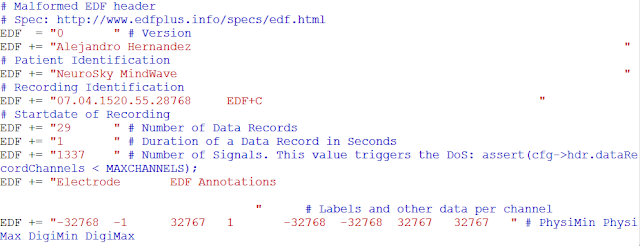The Parallax – Security patches don’t often come wearing gold-sequined tuxedo jackets, but maybe they should. If they did, everybody from consumers to security experts might pay more attention to them, and perhaps have a better understanding of why, when a vulnerability is discovered, “just patch it” isn’t exactly the answer.
Industries: Healthcare
Treat the Cause, not the Symptoms!
I read that the NHS Digital team carried out an onsite cyber assessment of 88 out of 236 Trusts. None passed. Not one. Think about this. These trusts are businesses whose core function is the health and well-being of its customers, the patients. If this were a bank, and someone did an onsite assessment and said: “well the bank left all the doors open and didn’t lock the vault”, would you put your hard-earned money in there for safe keeping? I don’t think so. More importantly, if the bank said after a theft of all the money, “well the thieves used masks; we didn’t recognize them; they were very sophisticated”, would you be happy? No. Now imagine what could have been found if someone had carried out an in-depth assessment, thinking like the adversary.
The report acknowledges the existence of a cyber-attack plan. However, the plan hadn’t been communicated. So, no one knew who was doing what because the plan hadn’t been practiced and perfected. The only communication channel the plan provided for, email, was shut down. This meant that primary caregivers ended up communicating with personal devices using WhatsApp, potentially exposing Patient Medical Records on personal mobile phones through a social messaging tool.
The report also states the NHS Digital agency had no power to force the Trusts to “take remedial action even if it [NHS Digital] has concerns about the vulnerability of an organization”. At IOActive, we constantly talk to our customers about what to do in the case of a found vulnerability. Simply ticking a box without follow up is a pointless exercise. “My KPI is to perform a security assessment of 50% of the Trusts” – box ticked. That’s like saying “I will perform triage on 50% of my patients, but won’t treat them”. Really?!
An efficacy assessment of your security practices is not an audit report. It is not a box-ticking exercise. It is a critical function designed specifically to enable you to identify vulnerabilities within your organization’s security posture and empower you to facilitate appropriate controls to manage risk at a business level. Cyber Security and Information Security are not IT issues; they are a business issue. As such, the business should absolutely be focused on having skilled experts providing actionable intelligence, enabling them to make business decisions based on risk, impact and likelihood. It’s not brain surgery, or maybe it is.
It’s generally accepted that, if the bank had taken basic IT security steps, this problem would have been avoided. Treat the cause not the symptom. We are hearing a lot of evidence that this was an orchestrated attack from a nation-state. However, I’m pretty sure, with the basic failures of the NHS Digital to protect the environment, it wouldn’t have taken a nation-state to launch this destructive attack.
Amyas Morse, Head of NAO said: “It was a relatively unsophisticated attack and could have been prevented by the NHS following basic IT security best practices. There are more sophisticated cyber-threats out there than WannaCry, so the Department and the NHS need to get their act together to ensure the NHS is better protected against future attacks.” I can absolutely guarantee there are more sophisticated attacks out there.
Eighty-one NHS organizations were impacted. Nineteen-thousand five hundred medical appointments canceled. Six hundred GP surgeries unable to support patients. Five hospitals diverted ambulances elsewhere. Imagine the human factor. You’re waiting for a lifesaving operation – canceled. You’ve been in a car crash – ambulance diverted 40 miles away. All because Windows 7 wasn’t patched. Is that acceptable for an organization trusted with the care and well-being of you and your loved ones? Imagine the damage had this attack been more sophisticated.
Cybersecurity Assessments are not audit activities. They are mission critical assessments for the longevity of your business. The NHS got lucky. There are not many alternatives for health care. It’s not like you can pop down the street and choose the hospital next door. And that means they can’t be complacent about their duty of care. People’s lives are at stake. Treat the cause not the symptoms.
Brain Waves Technologies: Security in Mind? I Don’t Think So
I should note that real attack scenarios are a bit hard for me to achieve, since I lack specific expertise in interpreting EEG data; however, I believe I effectively demonstrate that such attacks are 100 percent feasible.
Through Internet research, I reviewed several technical manuals, specifications, and brochures for EEG devices and software. I searched the documents for the keywords ‘secur‘, ‘crypt‘, ‘auth‘, and ‘passw‘; 90 percent didn’t contain one such reference. It’s pretty obvious that security has not been considered at all.
I recorded the whole MITM attack (full screen is recommended):
For this demonstration, I changed only an ASCII string (the patient name); however, the actual EEG data can be easily manipulated in binary format.
– Neuroelectrics NIC TCP Server Remote DoS
– OpenViBE (software for Brain Computer Interfaces and Real Time Neurosciences) Acquisition Server Remote DoS
I think that bugs in client-side applications are less relevant. The attack surface is reduced because this software is only being used by specialized people. I don’t imagine any exploit code in the future for EEG software, but attackers often launch surprising attacks, so it should still be secure.
MISC














